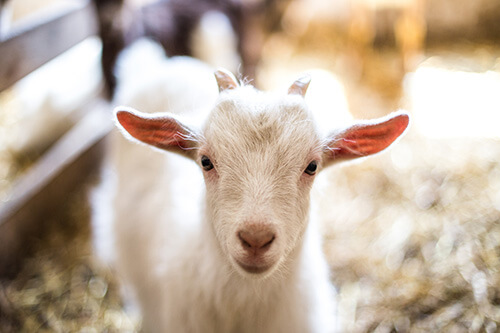Feeding Goats for Reproductive Success
Oct 26, 2020

Successful reproduction is the basis for profitability for most all livestock production, especially in goats, a species with the potential for multiple offspring with each pregnancy.
Unfortunately, the priorities for the doe may not be the same as the goat producer. The female’s plane of nutrition prior to breeding can influence the number of eggs produced as well as implantation rates of the fertilized embryos. This is a natural survival mechanism wherein the female has priorities for use of energy in the diet. In this list of priorities reproduction is considered a low status or luxury item that only takes place after other more important body needs are met. Only after their environment is perceived as plentiful do they prepare for breeding. While this priority system prevents females from becoming pregnant during times in which it would not be in their best interest, it can also be used as a management tool to enhance reproduction.
The term “flushing” refers to the practice of temporarily increasing the energy content of the diet, leading to increased body condition, higher glucose levels in the blood, and a resulting boost in the maturation of eggs and embryo implantation rates. The goal is to raise the energy level in the diet without causing digestive upset or hampering the utilization of forages. There are multiple ways to achieve this, and while corn may have been used in the past, it may not be the best choice. High levels of starch in corn can depress forage digestibility, resulting in a lower than expected net gain in total dietary energy.
To realize the benefits of flushing, begin feeding a low-starch high energy supplement, such as Co-op 16% Pelleted All Purpose Goat Feed-RUM (#93458), three weeks prior to the initiation of breeding season at the rate of 1 lb/hd/d and continue until four weeks post breeding. Always increase feed intake gradually and make certain adequate feeder space is available to limit competition and ensure proper intake by smaller, more timid females.
Following the flushing period, return to maintenance feeding levels until the last third of gestation, when increased fetal growth and preparation for birth and milk production again dictate the need for supplementation.
Unfortunately, the priorities for the doe may not be the same as the goat producer. The female’s plane of nutrition prior to breeding can influence the number of eggs produced as well as implantation rates of the fertilized embryos. This is a natural survival mechanism wherein the female has priorities for use of energy in the diet. In this list of priorities reproduction is considered a low status or luxury item that only takes place after other more important body needs are met. Only after their environment is perceived as plentiful do they prepare for breeding. While this priority system prevents females from becoming pregnant during times in which it would not be in their best interest, it can also be used as a management tool to enhance reproduction.
The term “flushing” refers to the practice of temporarily increasing the energy content of the diet, leading to increased body condition, higher glucose levels in the blood, and a resulting boost in the maturation of eggs and embryo implantation rates. The goal is to raise the energy level in the diet without causing digestive upset or hampering the utilization of forages. There are multiple ways to achieve this, and while corn may have been used in the past, it may not be the best choice. High levels of starch in corn can depress forage digestibility, resulting in a lower than expected net gain in total dietary energy.
To realize the benefits of flushing, begin feeding a low-starch high energy supplement, such as Co-op 16% Pelleted All Purpose Goat Feed-RUM (#93458), three weeks prior to the initiation of breeding season at the rate of 1 lb/hd/d and continue until four weeks post breeding. Always increase feed intake gradually and make certain adequate feeder space is available to limit competition and ensure proper intake by smaller, more timid females.
Following the flushing period, return to maintenance feeding levels until the last third of gestation, when increased fetal growth and preparation for birth and milk production again dictate the need for supplementation.